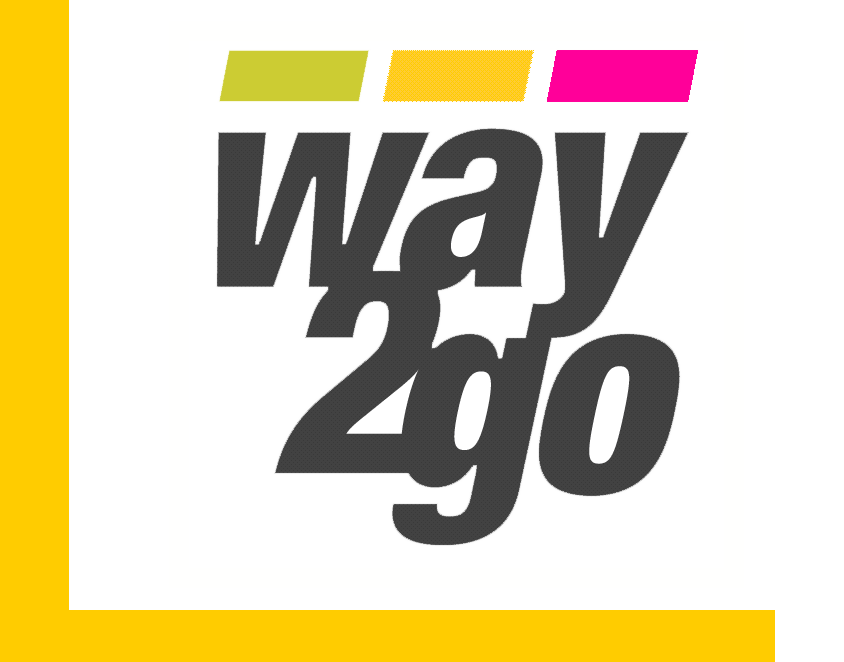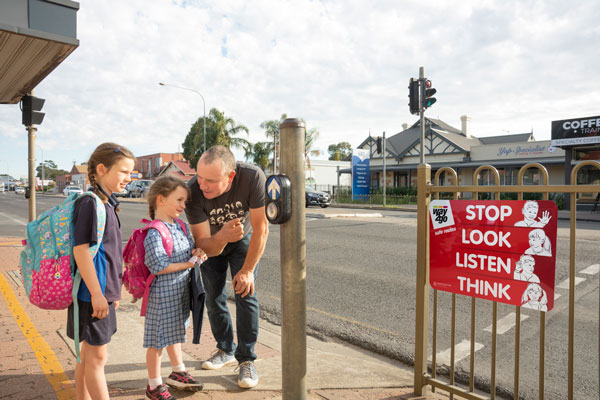Planning the trip to and from school
The decision about how to get to school is complex and unique to each family. These resources have been developed to help you plan a routine that works for your family.
-
Develop a routine that suits your family
- What do we currently do?
Record your current travel habits for the school week. Include any destinations you reach before or after school drop off and pick up, as well as the mode of travel (walking, riding, driving). If more than one adult in your household shares responsibility for school journeys make sure you include their travel habits too. - Talk together
Discuss the reasons for your current routine - ‘Why do we travel this way? ‘What other ways could we use to get to and from school? What are the good and not so good things about each of them? - Review your current travel routine
Look for opportunities and ideas of things your family can do to make it possible to walk, ride or scoot for at least some of the way (start in manageable steps and then grow it).
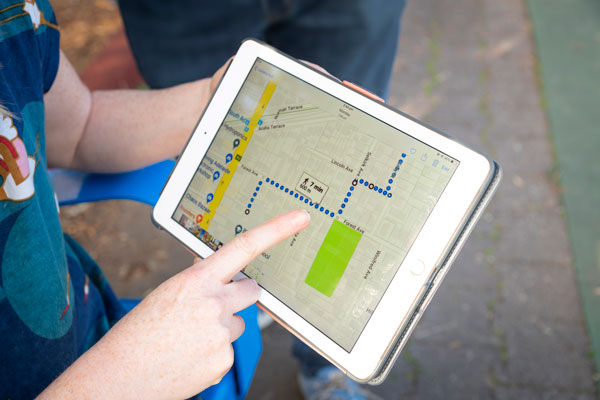
- Map your journey
Use Google maps or the Cycle Instead Journey Planner to come up with a suitable route. Make use of quiet local streets and pedestrian crossings where possible. The safest route may not be the fastest but it will assist your child to focus their attention on learning safe travel behaviours.
Print a copy and highlight the route. Trial the route together and talk out loud about what you are doing/looking to stay safe. - Traffic safety rules and knowledge
What do we need to know or do to stay safe when walking, riding or scooting to or from school? How could we find out? e.g. use STOP, LOOK, LISTEN, THINK, ACT before crossing the road. - Who could help?
e.g. extended family, family friends, school friends. Discuss what to do if the routine for the day needs to change or an emergency occurs. You may consider including a picture and name of contact details of those that may assist in your child's backpack. It is a good precaution for any occasion.
- What do we currently do?
-
Some other tips…
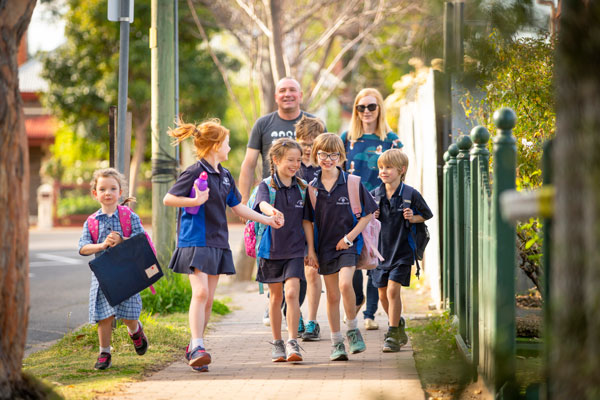
- It does not need to be an all or nothing arrangement. Consider if there are particular days or times that would suit best. Could you park and walk, ride or scoot part of the way to school instead of the whole way? If you don’t know other community members, consider attending school social events and/or your child joining local clubs. Talk to your school parent group or governing council about creating a group for parents who live nearby who want to share pick up and drop off responsibilities.
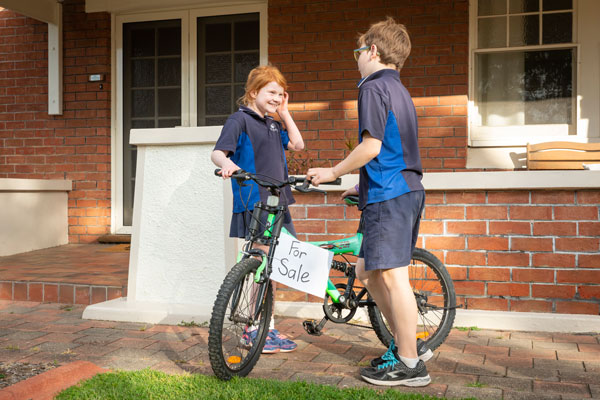
- It's likely your child will go through a few bike sizes from primary to secondary age. It's worth considering a second hand bike. You could try looking online. Schools might consider a swap and sell event if there is enough demand.
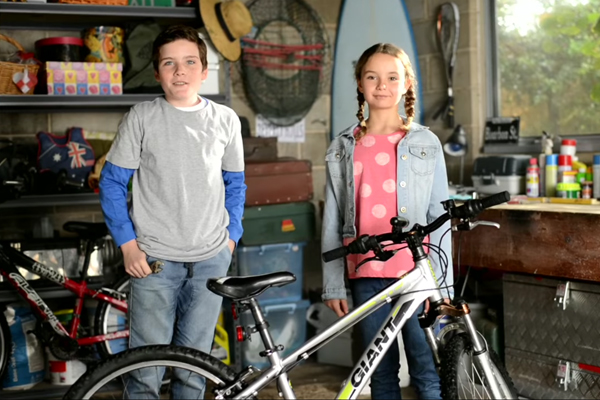
- If you don't know how to do a bike safety check - this video can help.
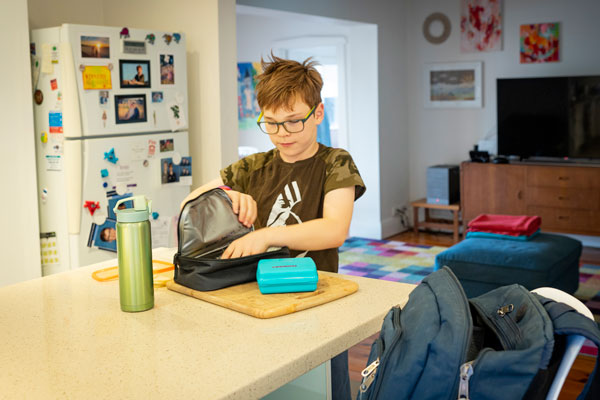
- Save time in the morning by doing some things the night before, e.g. pumping up bike tyres or packing recess and lunch.
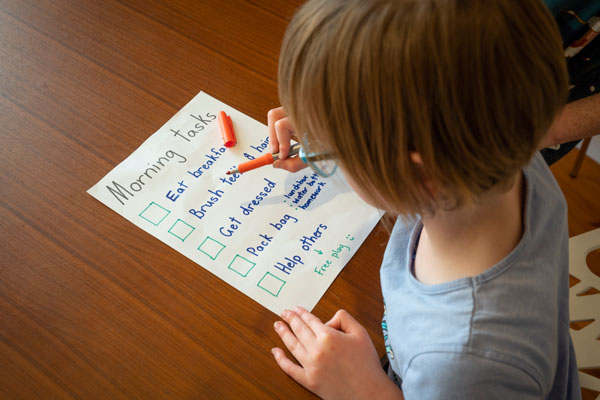
- Create a visual checklist of tasks your child will be responsible for doing to get organised. If there are lots of new tasks they haven’t done before focus on achieving a few to begin with and build on those skills over time so it’s not so overwhelming.

- It does not need to be an all or nothing arrangement. Consider if there are particular days or times that would suit best. Could you park and walk, ride or scoot part of the way to school instead of the whole way? If you don’t know other community members, consider attending school social events and/or your child joining local clubs. Talk to your school parent group or governing council about creating a group for parents who live nearby who want to share pick up and drop off responsibilities.

- It's likely your child will go through a few bike sizes from primary to secondary age. It's worth considering a second hand bike. You could try looking online. Schools might consider a swap and sell event if there is enough demand.

- If you don't know how to do a bike safety check - this video can help.

- Save time in the morning by doing some things the night before, e.g. pumping up bike tyres or packing recess and lunch.

- Create a visual checklist of tasks your child will be responsible for doing to get organised. If there are lots of new tasks they haven’t done before focus on achieving a few to begin with and build on those skills over time so it’s not so overwhelming.
-
Creating a Family Travel Plan
Family School Travel Plan
You can record your family travel plan on this chart or create one
of your own.Active Travel Passport *under trial 2019*
Children can use this active travel passport to
record their travel.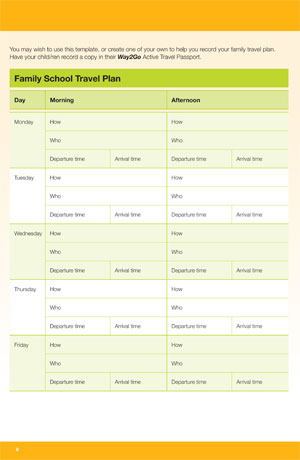
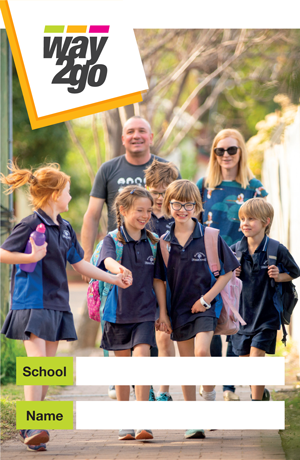
-
Helping children become safe and independent travellers
- The best way for children to develop safe walking and bike riding habits in traffic is to give them plenty of opportunities to learn and practice during everyday experiences such as the trip to and from school, the park or local shopping centre.
- Get your children to come up with ideas of places to go and what to practice. This will help them make safe decisions in traffic situations. Once you have your goals use the Way2Go Active Travel Passport to monitor how well it is working.
